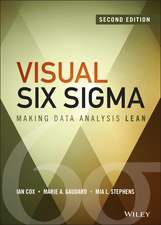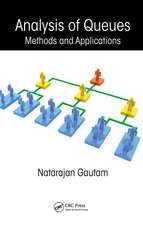Work Domain Analysis: Concepts, Guidelines, and Cases
Autor Neelam Naikaren Limba Engleză Hardback – 7 mai 2013
Building on the foundational concepts of cognitive work analysis by providing the first comprehensive treatment of work domain analysis, the book begins with fundamental topics such as abstraction, decomposition, and structural means-ends and part-whole relations, clearly outlining the basic characteristics of a work domain model. It then explores more advanced topics such as the development of multiple models of a system and the distinction between causal and intentional systems and illustrates them with numerous examples across a range of systems including warships, libraries, and petrochemical plants. It also provides comprehensive guidelines for performing work domain analysis.
The author provides three detailed case studies that examine the impact, unique contribution, and feasibility of applying work domain analysis in industrial settings. These case studies demonstrate that work domain analysis can be used to address a range of problems beyond interface design, such as team design, training, and the evaluation of system design concepts. They also provide concrete illustrations of the guidelines for work domain analysis.
Without an appreciation of the variety of applications of work domain analysis, and its suitability for implementation in industrial settings, the benefits of this approach may not be fully realized. This book supplies the deep knowledge of this tool that will lead both to more powerful and innovative applications of the approach and to designs that support flexibility or adaptation in the workplace, making systems safer, healthier, and more productive for workers.
Preț: 793.50 lei
Preț vechi: 967.68 lei
-18% Nou
Puncte Express: 1190
Preț estimativ în valută:
151.86€ • 157.95$ • 125.37£
151.86€ • 157.95$ • 125.37£
Carte tipărită la comandă
Livrare economică 15-29 aprilie
Preluare comenzi: 021 569.72.76
Specificații
ISBN-13: 9780805861297
ISBN-10: 0805861297
Pagini: 338
Ilustrații: 115 black & white illustrations, 41 black & white tables
Dimensiuni: 178 x 254 x 23 mm
Greutate: 0.77 kg
Ediția:1
Editura: CRC Press
Colecția CRC Press
ISBN-10: 0805861297
Pagini: 338
Ilustrații: 115 black & white illustrations, 41 black & white tables
Dimensiuni: 178 x 254 x 23 mm
Greutate: 0.77 kg
Ediția:1
Editura: CRC Press
Colecția CRC Press
Public țintă
Academic and Professional Practice & DevelopmentCuprins
Introduction: Cognitive Work Analysis. Work Domain Analysis. Concepts: Abstraction. Decomposition. Structural Means–Ends, Part–Whole, and Topological Relations. Multiple Models. Activity: Whether or Not to Model? Guidelines: Analytic Themes for Work Domain Analysis. Cases: Evaluation of Design Concepts. Team Design. Training. Conclusion. Appendix: The Remaining Dimensions of Cognitive Work Analysis. References. Index.
Recenzii
"... this eagerly awaited book from Neelam Naikar does not disappoint. It continues with the theme of her previous published material in adding valuable explanation of the works of Rasmussen and Vicente, along with insightful expansions. ... should be considered essential reading for anyone serious about applying cognitive work analysis for the first time, as well as an excellent resource for those more familiar with the technique to verify and validate their interpretations of cognitive work analysis."
--Daniel P. Jenkins, Research Lead, DCA Design International, Warwick, UK
--Daniel P. Jenkins, Research Lead, DCA Design International, Warwick, UK
Descriere
A comprehensive treatment of work domain analysis, this book covers fundamental topics such as abstraction, decomposition, and structural means-ends and part-whole relations—the basic characteristics of a work domain model. It also covers more advanced topics such as the development of multiple models of a system and the distinction between causal and intentional systems, illustrated with numerous examples, crossing a range of systems including warships, libraries, and petrochemical plants. Three detailed case studies assessing the impact, uniqueness, and feasibility of applying work domain analysis in industrial settings are described as well.








